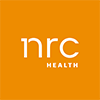
NRC
National Research ($NRC) Insiders Buy the Dip After 50% Plunge - Value Opportunity or Value Trap?
08/04/2025 20:57
Sentiment
C-Level
Summary
- National Research ($NRC) stock plummeted 50% over 18 months, but consecutive insider buying by major shareholder and CAO suggests potential undervaluation
- TRCV achieved three consecutive quarters of growth, reaching highest level since early 2021, signaling subscription business model recovery
- New CEO Trent Green's sales organization restructuring shows early signs of improved win rates and larger deal sizes
POSITIVE
- Consecutive insider buying by major shareholder and CAO demonstrates strong management confidence in company outlook
- Three consecutive quarters of TRCV growth signals stability recovery in subscription-based revenue model
- New CEO's sales organization restructuring shows early improvement in win rates and deal sizes
- Maintained 30% adjusted EBITDA margin proves operational efficiency
- Attractive 3.82% dividend yield at current price levels provides compelling dividend investment opportunity
NEGATIVE
- Debt-to-equity ratio of 379.58% significantly exceeds industry averages, creating interest rate risk exposure
- Cash holdings of only $5.27 million provide insufficient liquidity cushion relative to debt levels
- Healthcare spending pressure increases customer subscription cancellation risks
- 50% stock decline over 18 months indicates persistent technical weakness
- Intensifying competition in healthcare analytics market threatens margin pressure
Expert
From a healthcare technology sector perspective, NRC's insider buying represents a meaningful signal. Despite healthcare cost containment pressures, TRCV growth and AI solution differentiation suggest long-term competitiveness. However, high debt ratios increase interest rate sensitivity, requiring careful monitoring.
Previous Closing Price
$18.81
+0.18(0.94%)
Average Insider Trading Data Over the Past Year
$13.44
Purchase Average Price
$0
Sale Average Price
$43.97K
Purchase Amount
$0
Sale Amount
Transaction related to News
Trading Date | Filing Date | Insider | Title | Type | Avg Price | Trans Value |
|---|---|---|---|---|---|---|
12/19/2025 | 12/19/2025 | Sale | $ |
National Research Corporation ($NRC) is sending mixed signals to investors. While the stock has plummeted over 50% from $27 to $12.58 in the past year and a half, company insiders are displaying notably aggressive buying behavior, drawing significant attention. National Research Corporation, founded in 1981, is a healthcare information services specialist providing subscription-based analytics solutions including patient experience measurement, employee engagement surveys, and marketing analytics to hospitals and healthcare systems. Headquartered in Lincoln, Nebraska, the company serves the top 400 largest healthcare systems in the U.S. with 368 employees. It particularly leverages its AI-powered 'Huey AI' engine to help healthcare organizations improve brand loyalty and patient satisfaction. Most striking is the recent insider buying activity. On May 12, major shareholder Patrick Beans purchased 2,500 shares at $13.59 per share for a total of $33,973, and on July 31, Chief Accounting Officer Jordan Freeman bought 771 shares at $12.97 per share for approximately $10,000. Freeman's purchase timing is particularly intriguing as it occurred near the stock's annual lows. The timing of these purchases carries significant implications. When insiders who best understand the company's financial situation invest their own money during a sharp decline, it suggests they believe the current stock price is severely undervalued relative to intrinsic value. Indeed, the company's fundamentals appear difficult to justify the stock's decline. Q1 2025 recorded revenue of $33.55 million and net income of $5.78 million, while Q2 2024 achieved EPS of $0.26 and revenue of $35.02 million. With annual revenue of $140.31 million and maintaining a net profit margin of 12.78%, the company demonstrates stable profitability. Most encouraging is that Total Recurring Contract Value (TRCV) has grown for three consecutive quarters, reaching its highest level since early 2021. This is a core metric for subscription-based business models, indicating future revenue predictability and growth potential. Adjusted EBITDA margin also maintains approximately 30%, proving operational efficiency. New CEO Trent Green, who took office in May as a healthcare industry expert, is pursuing strategies to enhance geographic and product focus through sales organization restructuring. Early signs of improved win rates and larger deal sizes are already emerging, raising expectations. However, risk factors are substantial. The debt-to-equity ratio reaches 379.58%, significantly exceeding industry averages, which could intensify financial burden during rising interest rate periods. Cash holdings of only $5.27 million provide insufficient cushion relative to debt levels. The key metric investors should monitor is sustained TRCV growth. While quarterly growth rates of 2%+ are maintained, the critical question is whether this momentum can continue amid healthcare spending pressure and intensifying competition. The next earnings announcement, where the new CEO's specific strategic investment plans will be disclosed, should provide clearer direction. Regarding dividends, the annual 48-cent dividend provides a 3.82% yield, offering attractive dividend income at current price levels. The company has stated that dividend payments and opportunistic share repurchases are capital allocation priorities. In an optimistic scenario, accelerating TRCV growth and increased new customer acquisition could restore revenue growth to double digits. If AI-based solution differentiation succeeds, profitability could improve with higher margins. The most likely base scenario involves maintaining current stable profitability while TRCV gradually increases. In this case, the stock could recover from the current P/E of 17.74x toward the industry average of 20x. The risk scenario to watch involves accelerating healthcare spending cuts leading to increased customer subscription cancellations. In this case, high debt ratios could rapidly deteriorate financial health. Overall, current price levels appear to reflect excessive pessimism, as insiders seem to believe. However, debt risks and structural pressures including intensifying competition cannot be ignored, requiring a cautious approach.